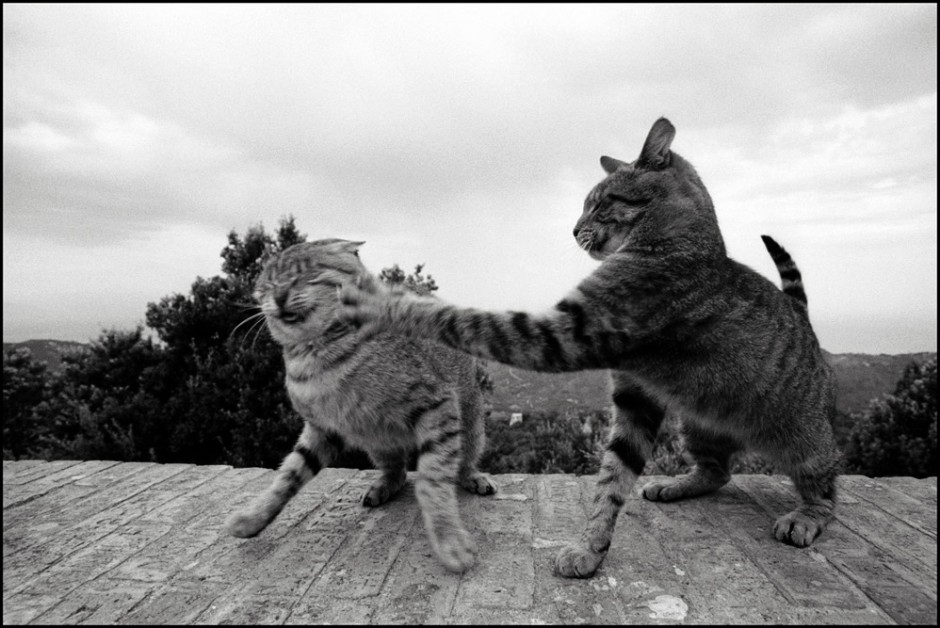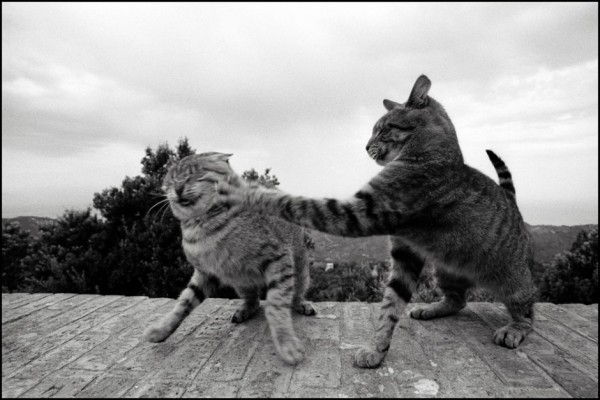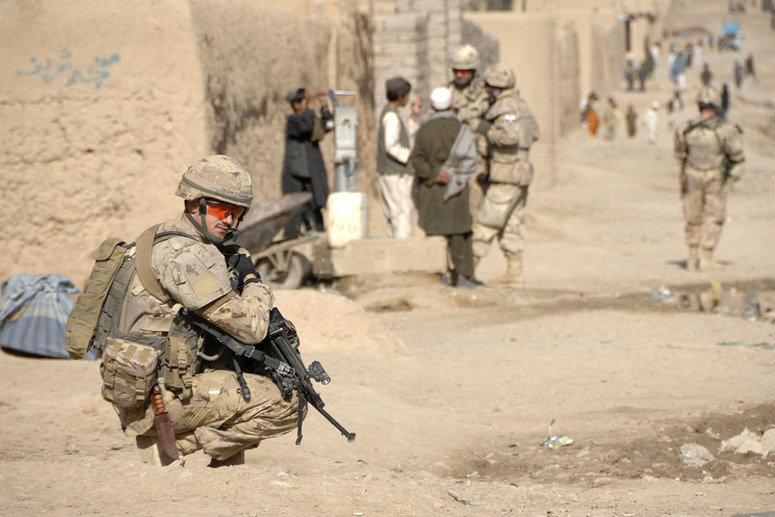Two years ago, I was granted the opportunity to travel to Tamarev in order to study the decades-old Bialyan-Pokolistanian conflict. During my stay at the Tamarev University residence, I came to realise that another conflict, arguably much greater than the human one at hand, had spread throughout the city streets. Interestingly, no peace scholar had dared to address this “other” war.
Day and night, right below the residence where I lived, vicious and heartless combats broke out between Tamarev’s cats. Unlike the Bialyan-Pokolistanian conflict, which is being fought by rational humans united in their desire for world peace, the cat combats have little hope of being resolved in a civilised manner. The constant skirmishes have had devastating consequences on the ground, leading to daily casualties warranting immediate international attention. The conflict has lasted for so long that it is no longer clear how many victims it has claimed in its bloody struggles. Some sources have estimated that the battles occurring between September 2000 and July 2007 have lead to 5,848 casualties. Unfortunately, it also seems that most of the sources claiming to have accurate data on the conflict are unreliable or biased.
One day, I decided to study this cat conflict in depth. As I carefully scrutinised the felines’ constant confrontations, I realised that there were two distinct parties to the conflict.
The first group lived safely within the campus walls, a barrier currently measuring “over 400 kilometers in length”. In the campus, both food and love were provided to them by a caring, albeit often remote, human population. This group of cats had been brought onto the campus as part of a global initiative seeking to amend past wrongs done unto them. Over time, these cats had come to see themselves as more sophisticated and civilised.
In spite of their poor appearance, they continuously claimed that the lands on which the campus was built were theirs, had been unrightfully stolen from them, and should be returned to them.
The other group of cats lived just outside of the campus walls. Their standards of living were shockingly lower than those existing within the campus walls. These cats were often forced to look for leftover food amongst the strewn garbage in desolate streets. As a result of their aimless roaming and inconsistent diet, their bodies appeared unhealthy, and their fur was dirty and matted. In general, these cats appeared much less likeable than those living in the safety of the campus walls. In spite of their poor appearance, they continuously claimed that the lands on which the campus was built were theirs, had been unrightfully stolen from them, and should be returned to them. Every once in a while, this second group of cats would attempt to cross over the campus walls. However, they would immediately be faced with the strong coalition formed by those cats living inside the walls. Struck down by the organised and more sophisticated on-campus cat clique, the infiltrators would return home filled with anger and hostility.
Due to their constant contact with humans, the cats living on campus had also developed a better understanding of legal processes and politics. In order to ensure their survival in this hostile land, they strategically referred to specific land laws and legal precedents. Many of the students living off campus had grown to like these on-campus cats, finding them much cuter and seemingly harmless than those living on the streets outside.
At the end of my study, I also realised how out of hand the situation had become. For both groups of cats, life appeared miserable. Every day, one could find the lifeless body of an animal strewn across one of the streets around campus. I remember once seeing my favorite kitten limping around the corner of a dark ally. When I approached it, I realised that it had lost an eye in a vicious fight the previous night. These cats, I am sad to say, do not seem to realise that they are all of the same species. The heroes of the Justice League should help them come to that realisation, explaining to these creatures that they can coexist peacefully and share their resources. Our stereotypes and superficial preferences need to be left aside so as to help cats all over the world. It is not important if they are cuter, dirtier, or seemingly more vicious. They are all cats.





